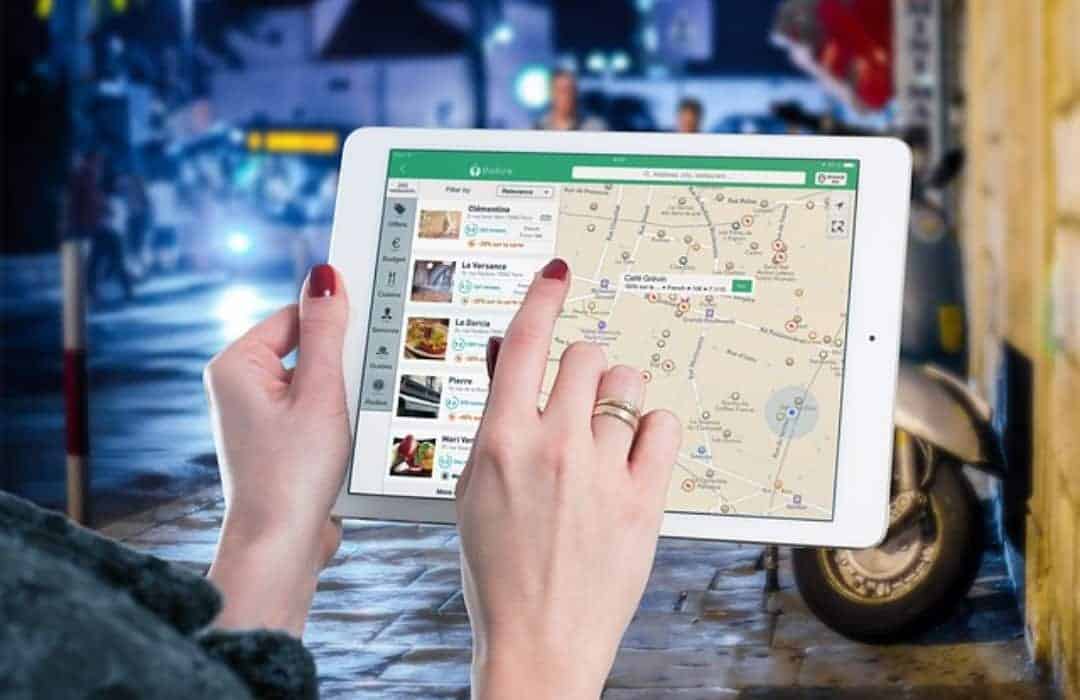Expert Interview Series: Chris Howard, CEO of Softeq Discusses Proximity Technology
Chris Howard is the owner and CEO of Softeq – an all-in-one service provider for IoT and M2M solutions with the right blend of tech expertise and R&D knack in hardware- and application-level development space.
Tell us about Softeq. What services do you offer?
We started off as a provider of system software development services back in 1997, and Softeq is now a tech powerhouse with a unique blend of expertise in the areas of software engineering (both application- and system-level) and full-cycle electronics design. To top it off, we have our own independent games development department that can contribute their industry expertise in AR/VR and add gamified mechanics into solutions not related directly to the game field. When a customer’s request to build a connected product or a proximity solution comes in, we have all the necessary knowledge and skills to get the ball rolling – starting from the low-level device characteristics of a printed circuit board, and working our way on up to a sophisticated front-end interface: irrespective of whether it’s on the device itself or resides on end-users’ mobile phones. Moreover, we can cover the entire ecosystem behind the front-facing portion by building a web infrastructure to serve it. Such cross-functional capabilities make the whole process a breeze: a team working on a certain area of the product gains direct access to a plethora of subject-matter knowledge from other departments and can allow for all interdependencies early in the process.
What type of work is Softeq doing with proximity and connected tech?
Softeq’s team is lucky to have had a chance to apply their knowledge on the development of a wide variety of proximity and connected tech solutions, and rise and overcome a number of exciting technical challenges. We’ve been working on projects such as in-store deal notification apps, indoor positioning and outdoor proximity solutions for entertainment and cultural venues (more familiar to the general public), as well as slightly less common (at least for now) smart furniture and smart jewelry with built-in emergency alerts and pedometer functionality. That’s not all and we have no plans to stop at this point.
To give you a more detailed example of what we do in this field, I’d like to mention another project. One of our clients requested a solution to help them manage the availability of rental equipment in their warehouses. Our team created a beacon-enabled asset tracking solution that relies on low-power RFID-tags attached to each asset item and a network of beacons in the client’s warehouses. The beacons capture data from the tags hourly and then automatically update the availability status of items in the client’s web system. The major challenges in this project were how to extend the durability and longevity of tags (successfully tackled to ensure tags operation for over 10 years), and eliminate possible obstacles for radio frequency signals such as metal storage shelves and wire screens (which we successfully solved as well).
Why is Softeq investing time and brainpower in these areas?
It’s hard to overstate the potential of connected tech. We are living in the time when smart devices and smart things are taking center-stage. In this new world, the old hardware has been completely re-envisioned and morphed into new software-enhanced hardware, oftentimes a self-sufficient gadget with a highly capable brain inside. Embedded technology lies at the core of the Internet of Things (IoT). Given the context, it’s a trump card for our team. We have embedded and hardware talent onboard, which has become a launchpad for most of Softeq’s IoT, connected tech and proximity projects. Connected tech solutions are closely knit with the device hardware, and such projects often require intervention at the low level: with either the customization of native functionality of an existing device or the creation of entirely new electronic products. On top of that, IoT and proximity technology is also about data – about the ability to make use of the data communicated by other connected objects or data regarding an internal state sensed by a smart object itself. Therefore, the Internet of Things solutions require the ability to capture, store and deliver this data in a meaningful and ultimately beneficial way.
We have a strong web department and data specialists capable of building robust and efficient web architectures and database management systems to pull together varied amounts of data and support a data exchange process in IoT systems. Softeq, in this case, stands as a unique tech provider able to connect all of the dots of an IoT concept into a fully functioning tech solution. We offer full-stack development for the connected world from device hardware and on up to all the other layers that serve it.
Moreover, the field itself shows no signs of abating: in the future, every object has the potential of becoming a smart object and a source of valuable data for its users: from smart home to telecare to well-being and lifestyle segments. The pivotal question here boils down to use cases, and to how businesses will leverage these unimplemented use-case scenarios to offer customers products that will meet their needs.
What do you think is the future for how proximity technology is used?
The opportunities are countless. Basically, any company that banks on the concept of big data, analytics, remote and contactless communication (device-to-device or people-to-device) can build on proximity technology.
A business can transform proximity tech from an exclusive sophisticated technology for offbeat users to a more ubiquitous humane inclusive tool that helps solving daily problems of everyone from a child to a senior citizen. And we can actually witness such examples of proximity technology becoming a ubiquitous thing today: take NFC payments, museum indoor positioning solutions, parking sensors in devices such as Parktronic, Park Assist and the good old proxy cards that have long become a common technique to ensure basic security measures in a corporate environment.
Proximity-based solutions will gradually trickle down on to the streets and facilitate our daily routines without even being noticed. From smart street lamps to smart parking locators, there is still a wide array of physical objects around us that can be sensed, sense the neighborhood around them, communicate useful data to us, and adjust their states in accordance with the information that they receive from us.
What industries seem most interested in this technology currently? Where do you think we’ll find it in the future?
Now we can notice a huge interest in this technology from the consumer segment with all these fitness trackers, domotics (home automation) solutions, in-car infotainment apps, and solutions for the sports industry populating the market. But in the future, we’ll see more and more examples of this technology making its way into corporate and industrial contexts. It has the promise of increasing companies’ operational efficiency, mitigating risks in hazardous environments, improving employee-training efforts, automating industrial processes, and many other potential use cases for business.
So far, enterprises are slightly cautious about the Internet of Things and are not rushing to embrace the concept. The concern is it will bring about inevitable changes to their existing corporate infrastructure, and will make them reconsider current security policies, which many are not ready for at the moment. For them, this field still remains in uncharted waters. However, I am convinced that before long the connected tech will become a prerequisite for business success and sustainable growth. The IoT and proximity solutions offer a level of data granularity and agility that were not obtainable before. This data can be leveraged to make informed decisions based on more accurate predictive analysis, set up more efficient processes, introduce preventive measures and maintenance in production areas, and more.
Another client of ours has a solution for heavy-duty truck fleet management. Using an electronic logging device with a vehicle network adapter and a mobile app serving it, the solution captures data on vehicle operation, which includes the speedometer and odometer data, information about problems and malfunctions of a truck, a driver’s status (driving, off-duty, etc.), and detailed driver’s daily logs. Then this data is sent over to a mobile app via Bluetooth and can be used by drivers and mechanics for repair and maintenance activities as well as represent an electronic trip sheet and a tachograph. The retrieved data from mobile devices installed in each truck is automatically transferred to a web dashboard used by fleet supervisors. They can then track drivers’ assignments and mileage, see their daily logs, and generate related reports. With this information at hand, fleet supervisors can compile accurate vehicle maintenance schedules, investigate accidents, detect violations, make sure that drivers stick to operating practices, and prevent accidents caused by an unbalanced work routine.
This is an excellent example of how the B2B market can exploit proximity technology to become more productive, while remaining compliant with constantly changing industry regulations and operating practices.
What are some of the most interesting or innovative uses of IoT and/or M2M technology you’ve observed recently?
There are many interesting startups tapping into the possibilities of IoT. Recently, I’ve heard about an Italian company called Cogisen that focuses on gaze tracking. They hope to make use of eye contact interaction with devices as the basis for remote control functionality in the connected ecosystem. The team wants their technology to be centered on tracking human iris movements and sees it as a natural complement to various types of human computer interaction implementations, such as voice control, motion tracking and others. It’ll be interesting to see how the technology will make its way to the market and where it’ll find its applications.
In general, I believe IoT and proximity ideas will proliferate in more down-to-earth contexts. This will require a holistic approach and collaboration of people from different fields. For example, if we take smart urban solutions, announced as smart city projects, the ground-zero problem solving comes out of the synergy of architects, urbanists, municipalities, policy makers, local communities, and other SMBs that can contribute to the solution of a complex problem with lots of interdependencies. IoT as it is perceived amid all the recent hype – conjuring up pictures of a bunch of sensors or beacons packed into another line of stylish devices or attached to an array of physical objects – is a technology enabler that facilitates what has been worked out by a group of interested parties. The same can be said about such fields as energy, food provisioning and farming, and public transportation. All can benefit from such multi-party cooperation, getting a clearly defined problem in its entire complexity and technology that will enable its solution.
The technology will provide much more data than can be retrieved by conventional methods, and much more reach and automation than a human can get without a machine. For example, consider information about weather, soil characteristics, traffic, human behavioral patterns in certain locations, drone-aided irrigation, or data about smart grid usage patterns. Arable is a good example of one of these types of solutions.
I expect more and more of them to be coming our way in the very near future.
Why should companies prepare to incorporate IoT technology into how they do business and the products or services they offer?
According to the Gartner forecast, the number of connected devices will be approximately 21 billion by 2020, while the global IoT market is predicted to reach nearly $14 trillion by 2022, and M2M/IoT-related services will grow to $120 billion by 2018. There is practically no way for businesses in the near future to ignore this trend because they will either lag far behind their competition by missing out on valuable data that gives them the edge, or they will fail to gain momentum and will be stuck offering its clients products that are seriously outdated. That’s why, companies should have already started to embrace the IoT concept and thinking of ways of incorporating it into their business strategies.
What should brands be considering as they build mobile apps that take advantage of proximity and connected tech?
There are three key points to be mentioned right away: security, power efficiency, and intermittent connection.
A number-one priority is a security and personal data protection. As soon as you are connected to the vastness of the Internet, with all of its pluses and minuses, you are exposed to the real potential of your personal data being leaked, hacked, and/or used in a manifold of malicious ways. In the case of connected tech and mobile apps, multiple signals will be automatically transmitted from smart devices to mobile phones without the users’ explicit consent for each data exchange operation. That’s why you have to cement the security of your solution right off the bat to thwart notorious data breach cases like the much-talked about Fitbit hacks. Ask yourself questions like: “Do I need to introduce multifactor authentication?”, “Does my company have to use MDM processes?”, “Does our BLE-enabled solution require random UUID address generation to protect a users’ geo-location?”, “How do we ensure the security of all parts of the IoT solution (and not just the smart object part) while communicating with devices and apps that contain sensitive data? “, “What can users do if they lose their mobile phone that utilizes Bluetooth Low Energy bonding for interaction with smart devices?”. The security of data should be put front and center in the IoT era because there are potentially more loopholes and vulnerabilities for malevolent activities.
Another crucial concern for mobile apps that goes hand-in-hand with connected solutions is power efficiency. Mobile phones of today are multi-functional devices that help us solve varied tasks throughout the day. Therefore, power drain problems caused by intensive modes of operation and constant data exchange with a connected solution can become a major setback for its successful adoption.
Silicon fabs are adapting to ever-changing demands of the IoT era and trying to pack maximum performance into ever-diminishing hardware components. Yet a successful solution often takes some extra customization or a careful choice between different implementation scenarios. For example, when it comes to RFID tags beaming signals to other devices in a system, you can choose between powerless passive tags or self-sufficient battery-equipped active tags. These and many other decisions need to be constantly weighted and re-evaluated during development and deployment.
Obviously, power efficiency is heavily dependent on the communication standards used by devices and objects in an IoT ecosystem. Since power consumption and connectivity are intersected, the latter should be also given close consideration. Choosing the right network range and standard will be a hot topic on the agenda. Personal Area Network or LAN, Neighborhood Area Network or WAN; ZigBee or BLE, Bluetooth or Wi-Fi, power efficient low range or high speed wide area network or even the nascent Low-Power Wide-Area Network options – all are in the spotlight when it comes to connectivity.
Do you have questions about Glance? Talk To Us today!
Share this
Subscribe To Our Blog
You May Also Like
These Related Stories

Expert Interview with Savanna on the Benefits of Online Ordering for Restaurants for The Loyalty Box

Expert Interview Series: Zack Drew with Blue Label Labs on iOS vs. Android App Development





